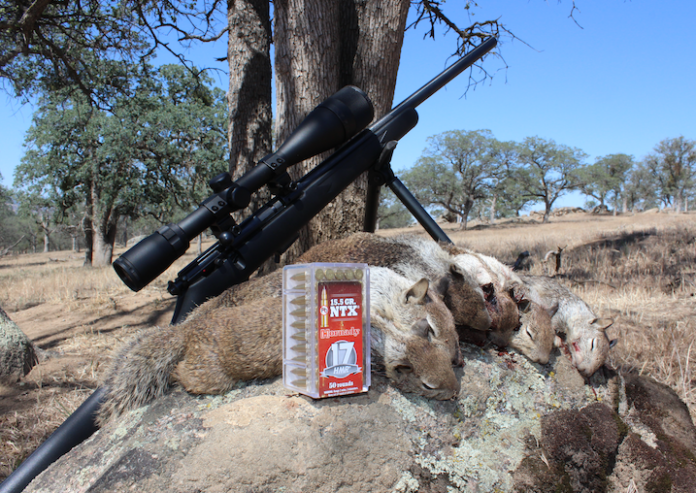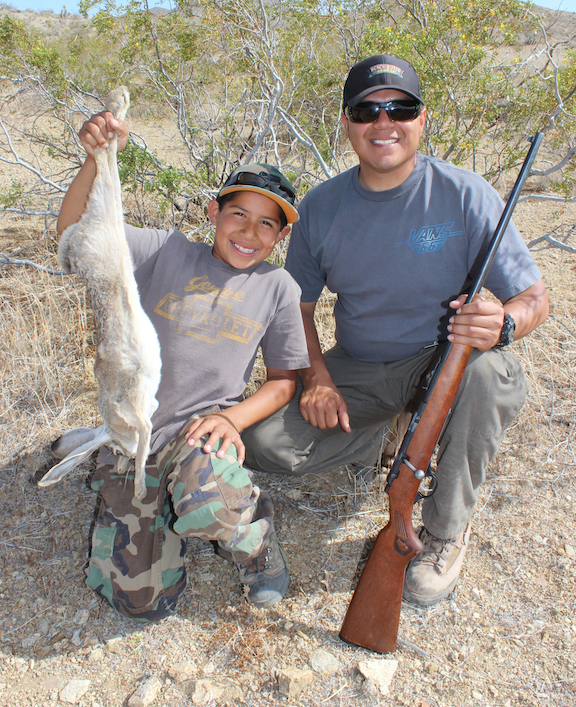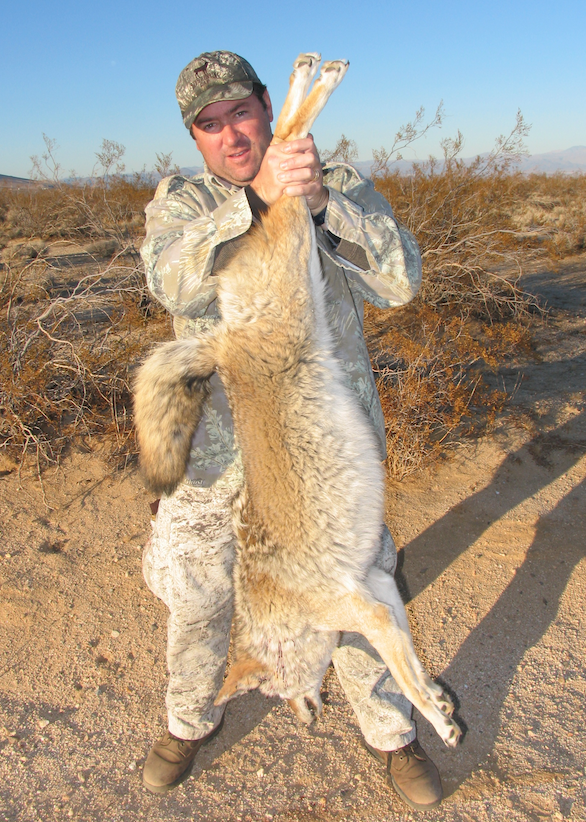
By Tim E. Hovey
With most of the game hunting seasons now closed, for many hunters, this time of year can be considered the hunting doldrums. For me, this time of year is where I get a lot of my shooting practice in. Instead of studying seasons, patterns and limits of game animals, I turn my attention to some species listed under California’s non-game designation — or what most year-round hunters call varmints.
While there is no set definition in the California Fish and Wildlife code for varmints, the general theme is that they are considered any non-game animal that doesn’t have a set season. There are non-game furbearers like raccoon and badger that do have a set season, so for the sake of this article, these species aren’t considered varmints, although many farmers and ranchers may disagree with that.
While designated a game animal, due to its year-round season and no take limit, I’ve always considered jackrabbits part of the varmint clan. They are numerous in the areas I hunt and a fun animal to pursue during the so-called offseason. Fish and Wildlife regulations stipulate that as a game animal, hunters must collect and use all jackrabbits harvested in the field to avoid issues with wanton waste.
Despite the ease at which certain exotic species like wild pig, Eurasian dove and starlings fall into this varmint category and can be hunted all year, we’ll save that group for another time.
The true varmints that have absolutely no regulations attached to them here in California are coyotes and ground squirrels. Not considered game animals, with no closed season or limit, these two species can be pursued 365 days a year. Add in the ubiquitous jack rabbit, and springtime hunters can stay plenty busy until the cottontail opener in July.
Regardless of their free-for-all hunting status, California Department of Fish and Wildlife still requires a hunting license to pursue varmints in the state, and of course, non-lead ammo is also a requirement.
The great thing about the pursuit of varmints is that in some areas of the state, their habitats overlap. During the spring, I’ve called coyotes in the morning, shot jack rabbits midday and set up for a ground squirrel shoot in the afternoon. If you’re looking to sharpen your shooting skills, nothing beats shooting dozens of times a day during a hunt.
Ground Squirrels
As the days get warmer, ground-dwelling mammals like ground squirrels will start to stir. Breeding in large numbers, concentrations of ground squirrels can be found near agriculture fields where their farmer-grown food is plentiful. This of course puts this burrowing varmint at odds with farmers and ranchers. On more than one occasion, I’ve approached landowners during the spring and asked if they’d like some assistance in removing these unwanted pests and received permission. All you have to do is ask.
Setting up at the edge of fields with a portable shooting bench is an excellent way to hone your shooting and quick target acquisition skills. From rimfire to .20 caliber center fire firearms, plinking ground squirrels out at distance is a great way to spend the day. We always make sure that we clean up any trash we see on the property and let the landowner know what the final tally was.
Jackrabbits

FATHER-SON JACK – Adrian De Orta and his dad Jose celebrate Adrian’s first jack rabbit. Abundant in many areas with a year-round open season, jack rabbits are a awesome species to hunt during the spring. TIM E. HOVEY PHOTO
Jackrabbit hunting is by far one of my favorite things to do out in the desert. They are more active during the morning and the evening, however, if the daytime temperature is mild, they can be hunted all day. Walking a dry sage-covered drainage with a shotgun in the right area will give new and seasoned hunters plenty of shot opportunities. Any shotgun you’re comfortable shooting, loaded with 7½ or 8 sized shot, will get the job done.
In areas with an abundance of jackrabbits, I also like to find a high spot and snipe them from a distance. Using a scoped rifle chambered in .17 HMR, some shooting sticks and a set of binoculars, I’ll glass the surrounding areas looking for jacks. Spotting targets out to 200 yards is the norm for this type of hunting, and this small Hornady bullet is the perfect choice for sniping jacks. Once the shooting is over, don’t forget to hike out and grab those jacks, believe it or not, they taste amazing when prepared correctly.
Coyote
For the most part, I do tend to give coyotes the spring and summer off. They start paring up in February and are tending to their pups for most of the spring. However, this seasonal respite is not honored when ranchers start having issues with losing calf’s or other livestock. Almost every spring, without fail, I have either helped a rancher with their coyote problem or know someone that has. In these situations, it’s time to get out and start calling.
Coyote hunting is a skill that will show benefits in just about any type of hunting. From quick target acquisition to running shots, in my opinion, nothing will keep you sharper in the off-season than hunting coyotes.
While almost every coyote hunter will have their opinion on calibers for chasing coyotes, I have two favorites that have never let me down. The tried and true .22-250 is almost always my caliber of choice for coyote-sized animals. Fast, plenty heavy enough and flat shooting, this round has never let me down. A close second caliber and one I shot for close to a decade after it first came out is the .204. Amazing speeds in smaller bullets weights, this round is a killer out to 220-yards. When I’m unsure on the terrain I’ll be hunting, both these rifles are loaded in the truck.
Springtime is a great time for outdoorsmen. Everything is growing and the non-game varmints start moving. If you’re still itching to get out in the field to hunt, check out what the off-season has to offer. If you’re like me, you’ll start to plan out your season so you’re hunting all year round.

SPRING COYOTE – This monster coyote was pulled off a ranch having issues with predators. The rancher had lost several goats and chickens to nighttime coyote activity. This coyote was one of four removed from the property. TIM E. HOVEY



